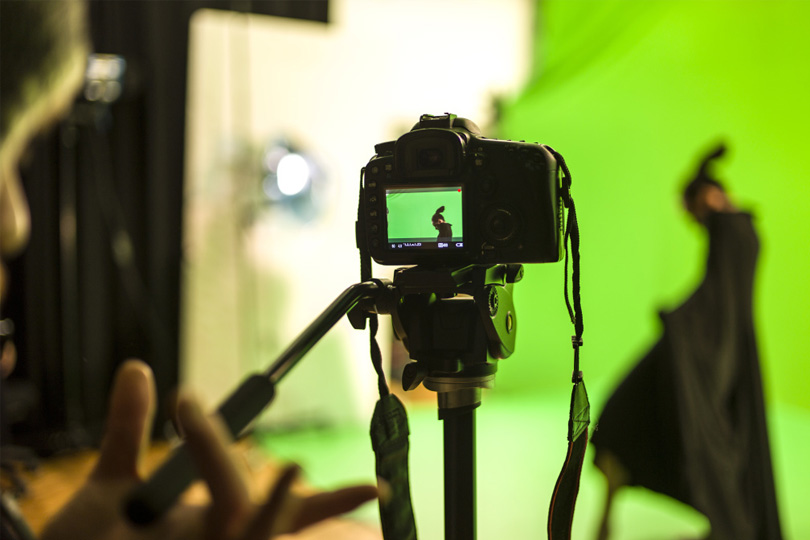
Using a green screen to create great video content when you you need a better background is a skill that requires practice and patience. With a solid understanding of the most fundamental aspects of filmmaking and video editing you can learn how to get a good shot out of even just so-so footage.
Here is a summary of the 5 key elements for producing great green screen video and getting professional quality results with chroma key from the video above:
Spacing
Because using a green or blue screen entails using a physical object behind your subject, you’ll want to pay attention to how much distance to place between the two.
- Make sure your subject is far enough away to prevent casting a shadow on the screen behind him.
- When shooting a talking head shot (just head and shoulders) your subject can be closer to the green screen.
- For a full-body shot, not only must your subject be farther away from the screen, but you’ll also want to shoot from a distance as well for a natural look and to prevent distortion.
Screen Color and Quality
The decision as to whether to use a blue or green screen will be determined by two factors.
- A blue screen is the best option use when shooting with film.
- A green screen is the best choice when you’re using digital equipment because of this equipment’s particular sensitivity to the green color spectrum. A green screen requires less light as well.
- You will also want to consider the color of clothing or costume the subject is wearing. For example, if your subject is wearing green, you’ll want to use a blue screen so that his clothing doesn’t disappear into the background.
Once you’ve chosen a color, you have some options as to what quality and type of screen to use.
- You can paint your background using Chroma Key paint. This option requires the most physical labor but is the most permanent option. It’s also all but necessary if you intend to create a cyclorama.
- Another option is to hang your green screen. You’ll need stands and clamps.
- Material options include paper, muslin cloth or foam-backed cloth. The latter prevents wrinkling while in use.
- There are also smaller fold-up screens available, which are handy for outdoor shots and tend to withstand wrinkling well.
Light It Right
When lighting your scene, you must focus on lighting your screen and your subject independently. You can combine your lighting but that may lead to the issue of casting shadows on your screen.
- First focus on evenly lighting your screen without your subject in the shot.
- For light sources you could use LED lighting systems, fluorescent tube lights, Hollywood strip lighting fixtures.
- You can use your camera’s zebra settings to check if your screen is evenly lit.
- Then light your subject. Focus on lighting him in such a way that matches how the background scene will appear in post-production.
Camera Types and Color Compression
The type of camera and settings you use will determine how seamlessly your green screen will transition to a background in post. You’ll want to start with an HD camera if possible.
- Compressed 4x2x2 works fairly well for pulling a good quality shot with a screen.
- The best option, however, is to shoot raw.
- This option uses quite a bit more memory than other options.
Translation: Post-production Work
The post-production software you use will make all the difference in the scene you’re able to pull. Quality software can pull a good shot even out of sub-par footage.
- Adobe After Effects is a great platform to use for compositing.
- KeyLight, a plugin that comes with After Effects, comes with many features to help pull a good scene.
- If you can’t pull a good key from the entire frame, try the technique in After Effects called garbage matting, in which you can select a portion of the shot that works well and eliminate the unimportant, lower-quality movement around that portion.
Be sure your subject doesn’t move into the garbage area.
A special thanks to FilmmakerIQ.com for providing this embeddable video through their FilmmakerIQ.com Vimeo channel! Check them out for TONS of great filmmaking tips and tutorials.
Comments (2)
Adamskisays:
January 22, 2016 at 11:16 amI’d like to add one thing about the lighting, it was suggested to me by @TheC47. For any kicker or rim lighting you use add a 1/4 or even 1/2 magenta gel to help offset any green spill that might fall upon your subject.
Alansays:
September 5, 2017 at 2:52 amIt’s interesting, I also found a lot of green screen video footage https://greenscreenstock.com/ and many of them are available for free download.